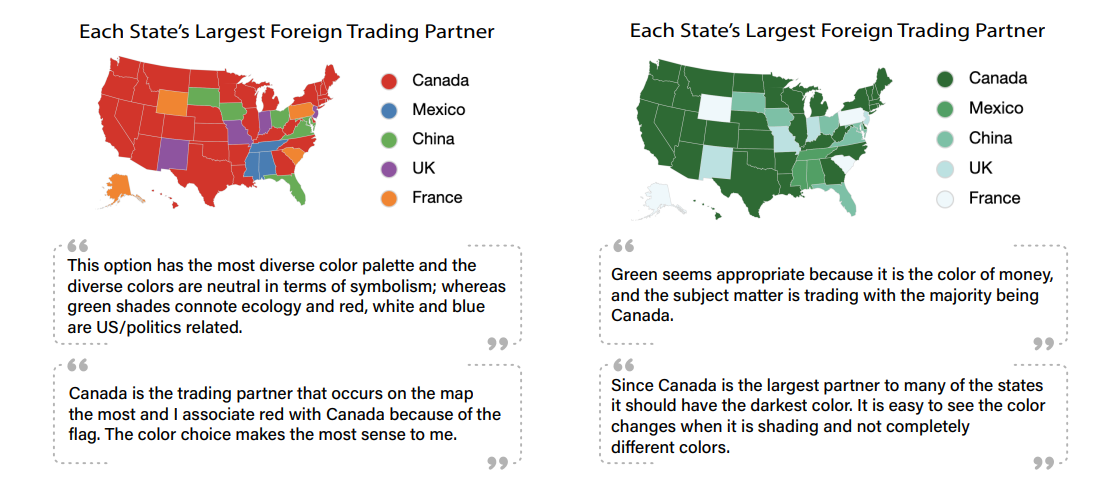When Red Means Good, Bad, or Canada: Exploring People's Reasoning for Choosing Color Palettes
Jarryullah Ahmad, Elaine Huynh, Fanny Chevalier
External link (DOI)
View presentation:2021-10-28T15:30:00ZGMT-0600Change your timezone on the schedule page
2021-10-28T15:30:00Z

Keywords
Color, General Public, Human-Subjects Qualitative Studies
Abstract
Color palette selection is an essential aspect of visualization creation and design, influencing viewer interpretation of the underlying data and evoking emotions in the viewer. Best practices, grounded in perceptual science and visual arts practice, form the basis of recommendation tools to support palette design and choice, but it is unclear how the general public reconciles the varied facets of color design. Does their decision-making align with established best practices? What factors do they take into consideration? Through a crowdsourced study with 63 participants, we find that the majority of palette choices are perceptually-motivated, but other factors such as semantic associations and bias also play a role. We identify some flaws in participant reasoning, highlight clashes in opinions, and present some implications for future work in recommendation tools.